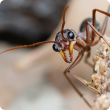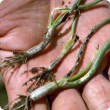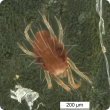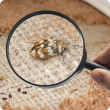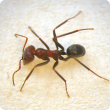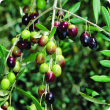PaDIS
The Pest and Disease Information Service (PaDIS) provides advisory and identification services on animal and plant pests, weeds and diseases that impact Western Australia's agriculture and food industries. This service plays an important frontline role for the detection and reporting of unfamiliar and potentially damaging pests, weeds and diseases of agricultural and quarantine concern.
Filter by search
Filter by topic
- (-) Remove Pests, weeds & diseases filter Pests, weeds & diseases
- Pests (30) Apply Pests filter
- Pest insects (25) Apply Pest insects filter
- Horticulture (22) Apply Horticulture filter
- Crops (22) Apply Crops filter
- Diseases (22) Apply Diseases filter
- Fruit (17) Apply Fruit filter
- Biosecurity & quarantine (17) Apply Biosecurity & quarantine filter
- Biosecurity (17) Apply Biosecurity filter
- Plant biosecurity (14) Apply Plant biosecurity filter
- Fungi (13) Apply Fungi filter
- Citrus (10) Apply Citrus filter
- Nursery & cutflowers (7) Apply Nursery & cutflowers filter
- Weeds (7) Apply Weeds filter
- Control methods (5) Apply Control methods filter
- Grapes & wine (4) Apply Grapes & wine filter
- Vegetables (3) Apply Vegetables filter
- Viruses & virus-like (2) Apply Viruses & virus-like filter
- Crop diseases (2) Apply Crop diseases filter
- Stone fruit (2) Apply Stone fruit filter
- Table grapes (2) Apply Table grapes filter
- Invasive species (2) Apply Invasive species filter
- Quarantine (2) Apply Quarantine filter
- Mites & spiders (2) Apply Mites & spiders filter
- Olives (1) Apply Olives filter
- Onions (1) Apply Onions filter
- Wine grapes (1) Apply Wine grapes filter
- New horticulture crops (1) Apply New horticulture crops filter
- Pome fruit (1) Apply Pome fruit filter
- Livestock biosecurity (1) Apply Livestock biosecurity filter
- Declared plants (1) Apply Declared plants filter
- Mechanical, physical and cultural (1) Apply Mechanical, physical and cultural filter
- Minor fruits (1) Apply Minor fruits filter
- Nematodes (1) Apply Nematodes filter

